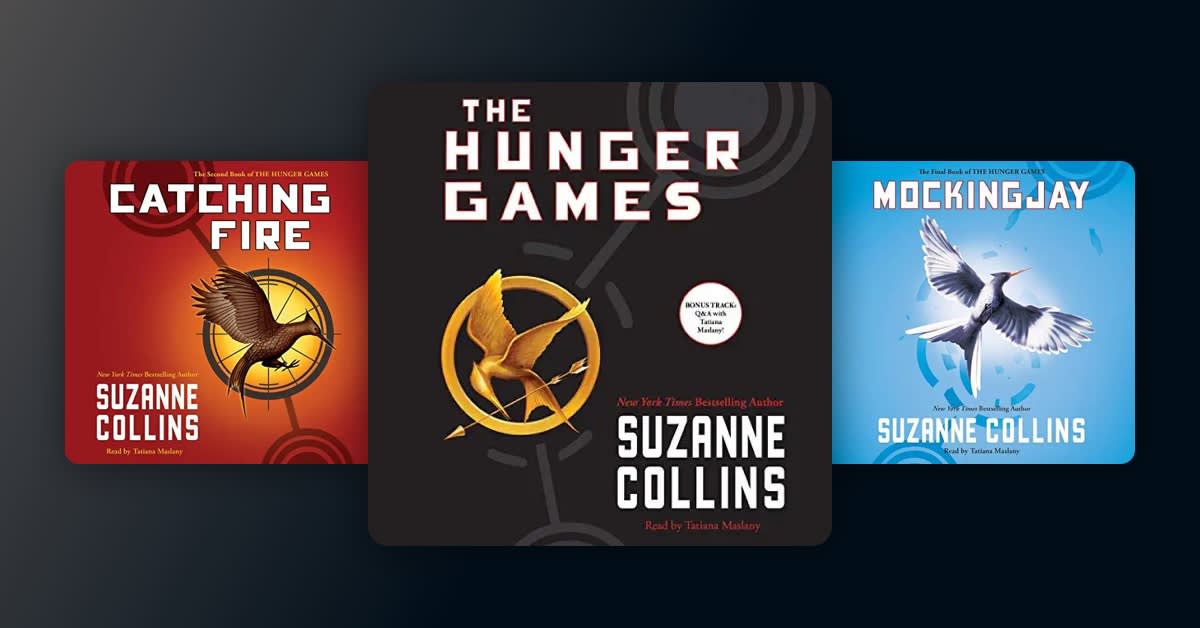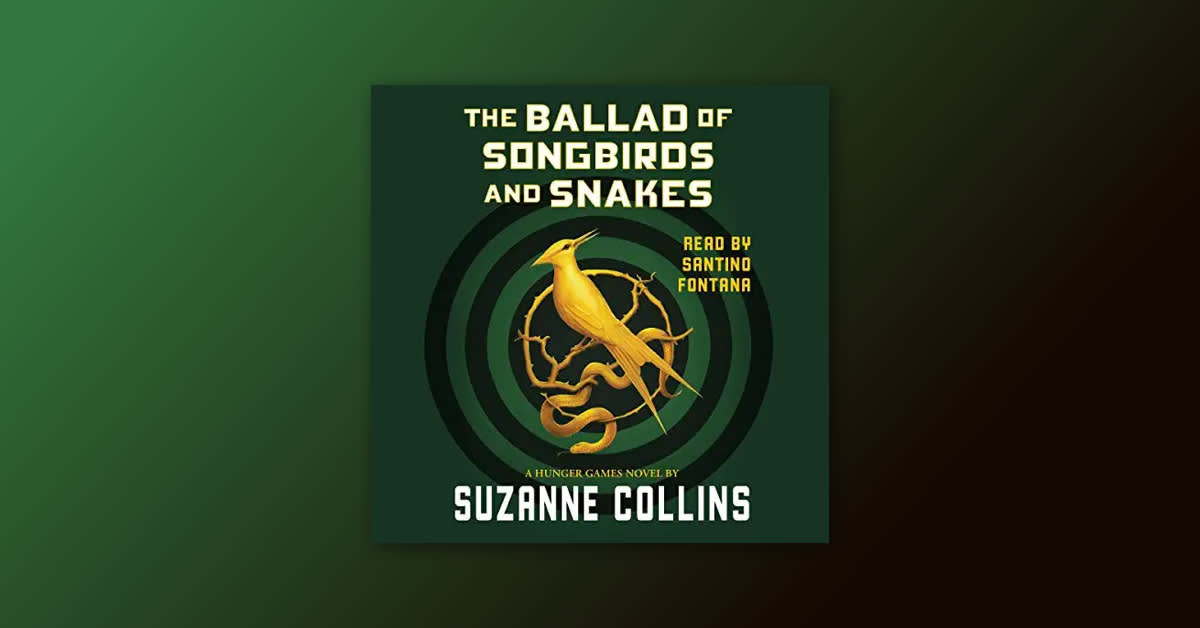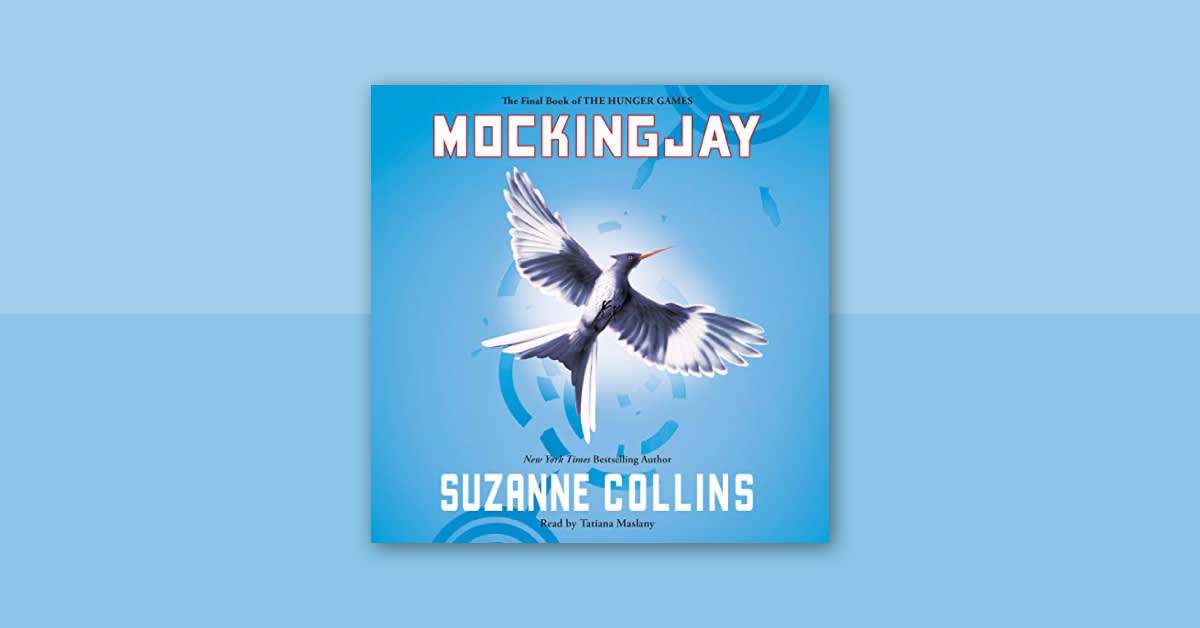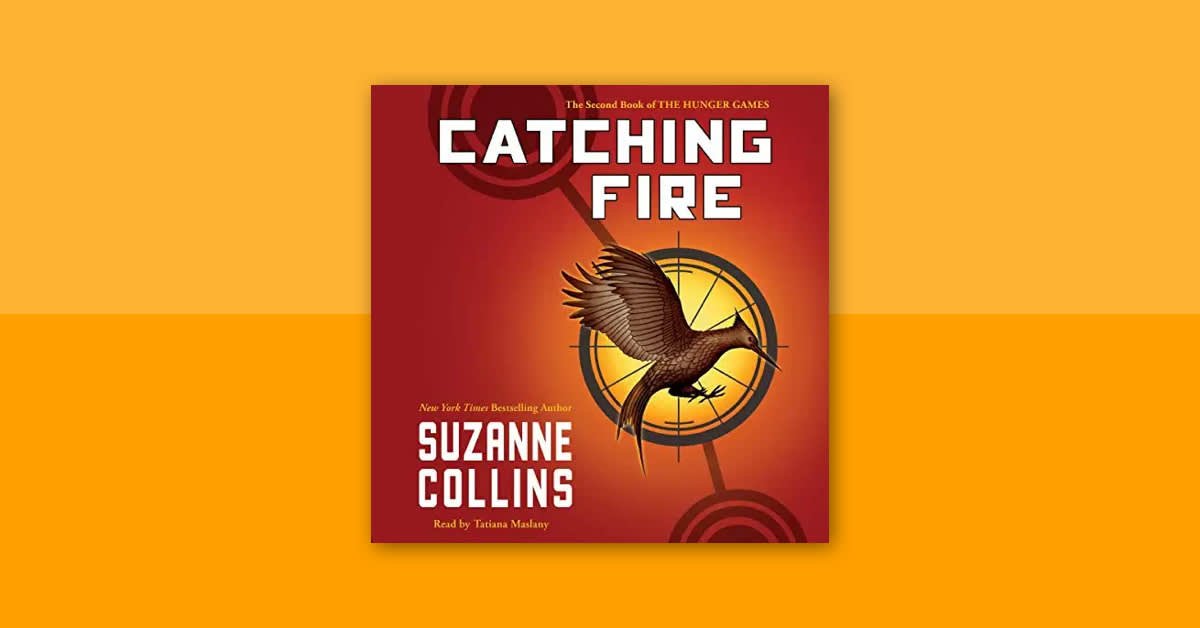A dystopian epic, The Hunger Games trilogy is the story of how Katniss Everdeen inadvertently sparks a rebellion while competing in an annual televised fight to the death. The books, written by Suzanne Collins, are bestsellers, with more than 26 million copies in print, and the audiobooks are narrated by Emmy Award–winner Tatiana Maslany of Orphan Black fame. So, it's no surprise that the trilogy inspired a series of movie adaptations—and both the books and movies continue to be incredibly popular even 15 years after The Hunger Games was first released. A prequel, The Ballad of Songbirds and Snakes, was published in 2020, with a new movie adaptation that is piquing the interest of a new generation of fans.
When it comes to adapting these incredible books, it's no wonder that some changes had to be made in order to capture such a long, complex, and (let's face it!) harrowing story on the screen. The biggest change? Mockingjay, the third book in the series, was split into two movies. Other changes were made, for the most part, to keep the violence PG-13, advance the plot and pick up the pace, and allow for the filmmakers to expand on the world of the Districts and Capitol in a visually appealing manner. The four films representing the main trilogy star Jennifer Lawrence as Katniss Everdeen, rounded out by an all-star cast that includes Josh Hutcherson, Liam Hemsworth, Woody Harrelson, Elizabeth Banks, Lenny Kravitz, Stanley Tucci, Donald Sutherland, and Philip Seymour Hoffman.
The new prequel, set 64 years before the events of Book 1, stars a new cast including Rachel Zegler, Tom Blyth, Viola Davis, Jason Schwartzman, Peter Dinklage, and Hunter Schafer. Whether you're a fan of the books, the movies, or both, here is your guide to all the differences between the books and their screen incarnations.
The Hunger Games
In The Hunger Games, we are introduced to Katniss Everdeen, who lives in District 12, which is located in a future United States known as Panem. After a devastating war, Panem is split into 12 Districts and ruled by a Capitol. Following a rebellion some years earlier, the Hunger Games—a televised fight to the death involving child tributes from each of the 12 districts—were instituted. The book begins on the day that each District chooses their tributes via lottery system, and we are introduced to Katniss, a resourceful young woman who has been looking after her family since her father died. When her younger sister's name is pulled for the Hunger Games, she steps up, saying, "I volunteer as tribute."
From there, Katniss is whisked to the Capitol to prepare for the Hunger Games, knowing that her only chance of surviving is killing every other tribute. In the Capitol, she gets a glimpse of a world rich beyond her imagination—District 12 is very poor—and a deeper understanding of the politics of Panem. As she is launched into the arena at the start of the games, she must decide if she should trust her fellow District 12 tribute, Peeta—or anyone else for that matter, because there's only one way out.
One of the biggest changes to note in not only The Hunger Games but all the movie adaptations is the perspective of the story. The books are told in first person, exclusively from Katniss's point of view. As a result, readers can only know what Katniss knows. But in the movies, the audience is allowed into scenes where Katniss isn't present. This is most obvious in the movies where there are added scenes involving President Snow and the Gamemaker, and when the movie shows the audience scenes of people back home reacting to what's happening in the arena. These changes give the viewer a hint about what this world is like, and what's happening beyond Katniss.
In the books, Katniss comes across as tougher and slower to trust than her movie counterpart, and she is a bit more ruthless too. She is reluctant to let anyone in, because she knows that doing so could cost her the game—and her life. This is particularly true of her relationship with Peeta. In the book, readers know their history and also how scared Katniss is to ally herself with him. She knowingly manipulates multiple situations to her advantage, especially when she becomes aware that Peeta has feelings for her. In the movie, this is not quite as evident, and so Katniss comes across a bit softer and more likable. She also seems genuinely torn about her feelings for Peeta in the movie, while in the book her feelings are much more straightforward.
Plot-wise, the movie is very loyal to the book with only a few small details changed here and there so that the story translates better on screen. However, some of the bigger changes from the books to the movie occur during some pivotal plot moments. Katniss reluctantly befriends Rue, a young tribute from District 11 who reminds Katniss of her little sister. In both the book and movie, Rue is killed in a tragic and horrific way and in her grief, Katniss gives her a burial tribute that honors her—and inadvertently sparks a rebellion across Panem. In the book, Katniss isn't aware of the effect her actions have on the rest of the country. In the movie, the audience can see District 11 revolting. The only clue Katniss receives is that the district give her a gift in the game during a time of great need.
The rest of the movie follows the book fairly closely, but one big difference is at the end. Peeta and Katniss are the only ones left in the game, and the Gamemaker unleashes genetically modified hounds containing the eyes of the dead tributes. While you can't see the eyes of these hounds in the movie, they are nonetheless terrifying. One of them bites Peeta in the leg. In the book, this causes an infection that necessitates the amputation of his leg. This does not occur in the movie.
Catching Fire
Catching Fire picks up six months after the conclusion of The Hunger Games. Katniss now realizes the effect her rebellion has had on the country, especially since she forced the hand of the Capitol by getting them to name both her and Peeta as Victors. She must convince the country that her actions stemmed out of a deep love for Peeta and not because she wished for the people to rebel—or her family will suffer. Katniss resents this but will do anything to protect her family, even as she resents the fact that she must pretend to be in love with Peeta. As the next year's Hunger Games approach, Katniss is horrified to learn that this year, the tributes will be selected from among the previous years' winners, putting her and Peeta back in the arena. They enter the arena a second time, determined to survive but uncertain about who to trust.
While the Catching Fire movie is also a fairly loyal adaptation, many of the small changes are a result of needing to streamline the story, which is fairly hefty. Again, we get scenes that do not include Katniss and give the audience a sense of the Capitol's plans and the lengths they are willing to go in order to suppress the rebellion. Some of the important plot points are altered to accelerate the pace of the movie and economize some of the action. For example, early on in the story, Katniss's childhood friend Gale is whipped for his insubordination. In the book, it's because he broke the rules. In the movie, it's for defying a Peacekeeper.
As the movie progresses, some secondary characters from the book are also missing, such as Bonnie, Twill, and Darius. They function as necessary informants to Katniss about rebellion in the other Districts, as the book is from her limited point of view. But the movie moves beyond Katniss's point of view to show what's happening in other Districts, so the audience doesn't need these characters to tell Katniss what's going on. Similarly, we also get more screen time with Plutarch and President Snow plotting against the rebellion and making plans for the next year's Hunger Games, all scenes that don't exist in the book. In the movie, for example, we meet President Snow's granddaughter, who resides in the Capitol (she doesn't make an appearance until Mockingjay in the books). Also, Katniss observes that President Snow's breath smells like blood in the book. Since this is difficult to convey visually, there is a scene in the movie where Snow's drink fills with blood, hinting that something isn't quite right with him.
The book also spends more time puzzling out the various clues as to what the Hunger Games arena looks like this year, and what the various codes of communication might be. There is some of it in the movie, but since the plot moves fairly quickly and the movie is a visual format, there is less screen time of the characters struggling to figure out what it all means. In the books, there are more clues and Katniss and the others take more time to piece it all together.
Speaking of Katniss's allies, Finnick Odair, played by Sam Claflin, takes more of a prominent role in the movie than he does in the books. There are some important and dramatic scenes that involve other characters in the book, and Finnick is substituted into their roles for the movies. As a result, Finnick becomes a more significant character.
Another major character difference involves Peeta. Since he doesn't lose his leg in the movie version of The Hunger Games, he does not spend the rest of Catching Fire using a prosthetic leg. As a result, there are some physical actions he is able to do much more easily in the movies than he was in the books because he doesn't have a disability. In the book, Peeta and Katniss also sell a story to the media that they're engaged and expecting a baby, and everyone believing that Katniss is pregnant is a big factor throughout the book. While this subplot exists in the movie, once Katniss enters the arena it seems as though most people forget she's supposed to be pregnant.
However, despite the differences in small details, the movie follows the plot points of the book fairly well, leaving Katniss rescued by the resistance at the end of Catching Fire, and Peeta captured by the Capitol.
Mockingjay
In the final book, Katniss is rescued by the rebellion and persuaded to act as the Mockingjay, a figurehead for the rebellion. She agrees, but in return asks that the Hunger Games tributes be given immunity in the new government. Working with Gale, she embarks on a mission to persuade other districts to join the rebellion, filming Capitol destruction. For her actions, the Capitol tortures Peeta to the point of insanity. Katniss knows that she must end the war, but she's also growing distrustful of the rebellion leaders, so she decides to take matters into her own hands.
The main difference between the Mockingjay book and the movie is that the movie adaptation was split into two parts in order to capture all that happens in the book on the screen. A lot of the violence was also curtailed so that the movies could be released with a PG-13 rating, and as a result, some details of how certain characters die are altered. We also get to see Peeta's rescue mission on the screen, and we get to see Gale in action. In the book, Katniss has no knowledge of what's happening until the mission returns. In the movie, Katniss watches on a video feed and even interacts with President Snow.
Effie is more of a presence in the movie than she is in the book, and Finnick is less of a presence in the movie than he is in the book. The character of Plutarch also has a significantly reduced role in the Mockingjay movie, due to actor Philip Seymour Hoffman's unexpected death. Since his character has some significance to the story, some of is messages are relayed via a letter, which Haymitch delivers to Katniss.
Katniss also demands to be the one to kill President Snow in the book, but this demand is left out in the movie. President Coin is also depicted as more sympathetic and trustworthy in the movie than she is in the book. As a result, the trilogy's ending might not be quite as much of a surprise to readers as it was to viewers unfamiliar with the book. The shocking climax scene from Mockingjay does take place in the movie Mockingjay Part 2, although the exact setting and exact details differ slightly. In the book, Katniss is given one arrow, while in the movie she has more. Furthermore, President Coin gives a manipulative speech right before the moment that Katniss shoots her, which does not happen in the book. In the movie, Coin's speech underscores how similar she is to Snow.
At the very end of both the book and movie, we see an epilogue where Katniss and Peeta have returned to District 12 and made a home there once more. The Hunger Games arenas are now memorials, and Katniss and Peeta are raising two children. The children appear younger in the movie than they are in the book, but in both versions the story leaves Katniss in the same place: traumatized, grieving, but hopeful for a better future for her children.
The Ballad of Songbirds and Snakes
The newest book in the Hunger Games series is the prequel to the trilogy, The Ballad of Songbirds and Snakes. The story follows a young Coriolanus Snow, before he's to become president of Panem, as he mentors a District 12 tribute named Lucy Gray Baird for the 10th annual Hunger Games. Both the book and the film trace how Coriolanus's back story—including that his father, Crassus Snow, was a military general killed by a rebel during the First Rebellion, and how he and cousin Tigris scavenged for food in their childhood during the Dark Days—informs his eventual arc as the series's main antagonist.
Similar to the previous films, the big-screen version of The Ballad of Songbirds and Snakes is a faithful adaptation of the novel. Still, adapting a 16-hour-plus audiobook into an under-3-hour film definitely necessitates some tweaks. In general, the events of the novel unfold at a slower pace, with the Printh Prize (a major motivation for young Snow to excel at mentoring Lucy Gray) being introduced far earlier in the film, the characters of Lepidus and Lucky being combined in the movie (minus the inclusion of Lucky's parrot, Jubilee), and the omission of some scenes and events.
Notably, when Coriolanus's classmate and friend Clemensia Dovecote is bitten by one of Dr. Gaul's snakes as part of her ploy to prove she did not in fact write a proposal authored by Snow, the collapsed Clemensia is led off-screen by Gaul's aides and never seen again. In the novel, however, her story continues with strange side effects from the bite; she develops yellow eyes and scales, and even after recovery remains cold and different. In the film, we're left to wonder what happened to her. Dr. Gaul's snakes definitively kill everyone else they bite in the movie, but Clemensia does receive a shot from Gaul's aides just after the attack, which might hint at her survival.
Of course, the stellar acting performances found in both the audiobook and the film mark another major difference. The former is voiced by a single performer, beloved narrator Santino Fontana, who plays an audiobook villain like nobody else, so he's a perfect choice for the Snow-focused tale. Highlights from the film's star-studded cast include a nuanced portrayal of Snow by Tom Blyth, whose blue eyes mirror those of his counterpart, Donald Sutherland, in the earlier films. Rachel Zegler (West Side Story) delivers a knockout singing and acting performance as the captivating Lucy Gray, while Jason Schwartzman (Lucky) and Viola Davis (Dr. Gaul) steal any scene they're in with wickedly delightful turns.
Despite some differences from the books, the Hunger Games movies are fairly loyal to the excellent trilogy and prequel, and do justice to the characters and major themes. While fans may quibble about the changes, the movies still capture the thrills and horrors of the original story, making Katniss Everdeen, and now Lucy Gray, among the most memorable YA heroines of all time.




